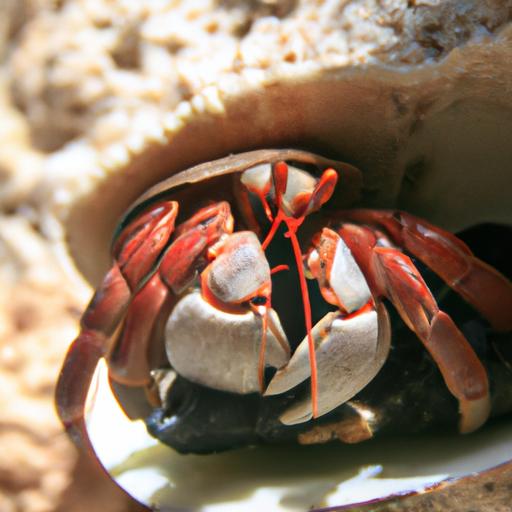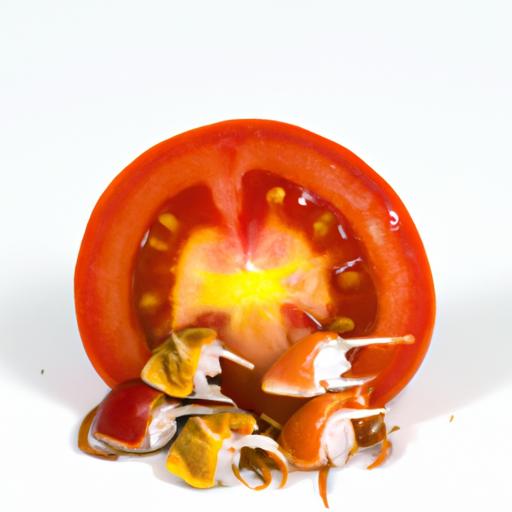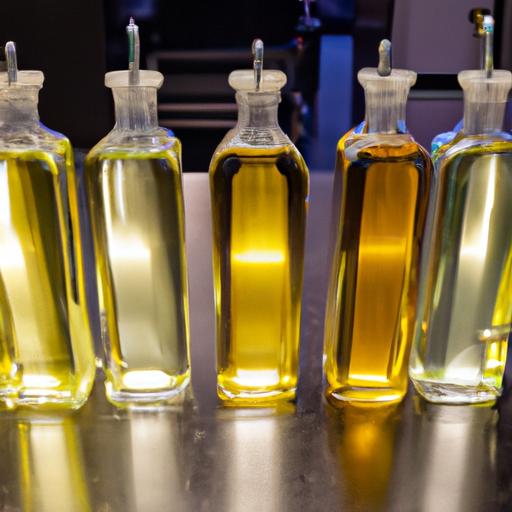Will Cooking Oil Freeze? Exploring the Freezing Point of Cooking Oil
Cooking oil plays a crucial role in our culinary adventures, adding flavor and texture to our favorite dishes. But have you ever wondered if cooking oil can freeze? Picture this: you’re preparing a delicious meal on a chilly winter day, and suddenly you realize that your bottle of cooking oil feels unusually thick. Is it possible that it has frozen? In this article, we will delve into the intriguing world of cooking oil and uncover whether or not it can freeze.
A. Definition of Freezing Point
Before we dive into the nitty-gritty details, let’s understand what the freezing point actually means. The freezing point is the temperature at which a substance changes its state from a liquid to a solid. It is the point where molecules slow down, lose their kinetic energy, and arrange themselves in a more structured form. This phenomenon is particularly relevant when it comes to cooking oil, as it affects its usability and quality.
B. Importance of Knowing If Cooking Oil Can Freeze
Understanding whether cooking oil can freeze is essential for several reasons. Firstly, it helps us determine how to store and handle our cooking oil properly. Secondly, it allows us to anticipate any potential changes in texture or flavor that may occur when exposed to low temperatures. Lastly, knowing the freezing point of cooking oil can guide us in making informed decisions when selecting oils for specific cooking methods.
C. Overview of the Article’s Content
In this article, we will explore the freezing point of cooking oil in depth. We will discuss the factors that influence the freezing point, examine whether cooking oil can indeed freeze, and analyze the effects of freezing on its quality. Additionally, we will look into the various factors that affect cooking oil’s freezing point, and provide tips on how to prevent it from solidifying during chilly weather. So, let’s embark on this enlightening journey and unravel the mysteries of cooking oil freezing!
What is the Freezing Point of Cooking Oil?
A. Explanation of the Freezing Point Concept
To grasp the freezing point of cooking oil, we must first understand the concept itself. As mentioned earlier, the freezing point is the temperature at which a substance transitions from a liquid to a solid state. In the case of cooking oil, this transition occurs when the oil reaches a specific temperature at which its molecules arrange themselves into a solid structure.
B. Factors Influencing the Freezing Point of Cooking Oil
Several factors influence the freezing point of cooking oil. One crucial factor is the composition of fatty acids present in the oil. Different types of fatty acids have varying molecular structures, leading to variations in their freezing points. For instance, oils with a higher proportion of saturated fatty acids tend to have higher freezing points compared to those with a higher percentage of unsaturated fatty acids.
Moreover, impurities and contaminants in the oil can affect its freezing point. These impurities can disrupt the orderly arrangement of molecules, causing the oil to freeze at higher temperatures than expected. Additionally, the presence of additives or preservatives in cooking oil may alter its freezing point, as these substances can interact with the oil’s molecular structure.
C. Typical Freezing Temperatures of Common Cooking Oils
The freezing temperatures of common cooking oils can vary significantly. For instance, olive oil typically freezes at around 21°F (-6°C), while coconut oil solidifies at approximately 76°F (24°C). Vegetable oils, such as canola and sunflower oil, tend to freeze at temperatures below 0°C (32°F). It is important to note that these freezing temperatures are approximate and can slightly vary depending on factors like oil quality and specific variations within each oil type.
Understanding the freezing points of different cooking oils allows us to make informed decisions when selecting oils for specific recipes and storage conditions. In the next section, we will explore whether cooking oil can indeed freeze and its implications.
Can Cooking Oil Freeze?
When it comes to the freezing point of cooking oil, the answer isn’t a straightforward “yes” or “no.” Let’s dive deeper into this fascinating topic and explore different aspects related to the freezing of cooking oil.
A. Discussion on the Freezing Point of Different Cooking Oils
Different cooking oils have varying freezing points due to their composition. For instance, olive oil tends to have a lower freezing point compared to oils like coconut or peanut oil. Understanding the freezing points of different oils can help us determine their suitability for specific cooking methods and storage conditions.
B. Determining If Cooking Oil Can Solidify at Low Temperatures
While cooking oil can technically solidify at low temperatures, the threshold at which it occurs can vary. Factors such as the type of oil, its purity, and any additives present can influence whether it will solidify or remain in a liquid state. It’s important to note that not all cooking oils solidify at the same temperature, so it’s crucial to be aware of the characteristics of the oil you’re using.
C. Effects of Freezing on Cooking Oil’s Quality and Usability
Freezing can impact the quality and usability of cooking oil. When cooking oil freezes, it may undergo changes in texture, consistency, and flavor. These alterations can affect its performance in cooking, potentially leading to undesirable results. Additionally, repeated freezing and thawing cycles can cause oil to degrade, reducing its shelf life and overall quality.
Understanding the freezing behavior of cooking oil allows us to make informed decisions when it comes to storage, handling, and selection for various cooking applications. In the next section, we’ll explore the factors that influence the freezing point of cooking oil, shedding light on why different oils have different freezing characteristics.
Factors Affecting Cooking Oil’s Freezing Point
When it comes to the freezing point of cooking oil, several factors come into play. These factors can significantly influence the temperature at which the oil solidifies. Let’s explore the key aspects that affect cooking oil’s freezing point.
A. Role of Fatty Acid Composition in Freezing Point Variations
The fatty acid composition of cooking oil plays a crucial role in determining its freezing point. Different oils contain varying proportions of saturated, monounsaturated, and polyunsaturated fatty acids. Generally, oils with higher saturated fat content tend to have a higher freezing point, making them more resistant to solidification in colder temperatures. On the other hand, oils with a higher proportion of unsaturated fats tend to have a lower freezing point, making them more susceptible to freezing.
B. Impact of Impurities and Contaminants on Freezing Point
Impurities and contaminants present in cooking oil can also affect its freezing point. Substances such as water, food particles, or other foreign materials can alter the oil’s properties, including its freezing point. Water, for instance, has a freezing point of 0 degrees Celsius (32 degrees Fahrenheit), and its presence in cooking oil can lower the overall freezing point of the oil. Therefore, it is crucial to ensure that the cooking oil remains free from any impurities to maintain its intended freezing point.
C. The Effect of Additives or Preservatives on Freezing Point
Certain cooking oils may contain additives or preservatives to enhance shelf life or prevent oxidation. These additives can potentially influence the freezing point of the oil. For example, some oils may contain antioxidants to prolong their freshness. These antioxidants can lower the freezing point of the oil, making it more prone to solidifying at lower temperatures. It is important to consider the presence of additives or preservatives when determining the freezing point of cooking oil.
Understanding these factors that affect the freezing point of cooking oil helps us make informed decisions while cooking and storing oil. By taking into account the fatty acid composition, impurities, contaminants, and additives, we can ensure that our cooking oil remains in its ideal liquid state, ready to infuse our dishes with delicious flavors. Now that we have explored the factors influencing cooking oil’s freezing point, let’s move on to the next section to discover how to prevent oil from freezing in the first place.
How to Prevent Cooking Oil from Freezing
When it comes to preserving the liquid state of your cooking oil during cold weather, proper storage techniques and temperature considerations play a vital role. Here are some effective strategies to prevent your cooking oil from freezing:
A. Proper Storage Techniques to Avoid Oil Solidification
-
Choose a Suitable Storage Container: Opt for a container that is opaque and airtight to protect your cooking oil from exposure to light and air. This helps preserve its quality and prevents unwanted chemical reactions that could lead to solidification.
-
Store in a Cool, Dark Place: Find a cool and dark spot in your kitchen to store your cooking oil. Avoid placing it near heat sources, such as stoves or ovens, as heat can accelerate the deterioration process and increase the likelihood of freezing.
-
Avoid Temperature Fluctuations: Keep your cooking oil away from areas prone to temperature fluctuations, such as near windows or vents. Rapid changes in temperature can cause condensation, leading to moisture in the oil and potential solidification.
B. Recommended Storage Temperatures for Different Cooking Oils
-
Olive Oil: Ideally, store olive oil between 57°F (14°C) and 70°F (21°C). This temperature range helps maintain its optimal consistency and preserves its delicate flavors.
-
Vegetable Oil: Vegetable oils, including canola, sunflower, and soybean oil, should be stored between 50°F (10°C) and 70°F (21°C). These oils have slightly higher tolerance to lower temperatures but can still solidify if exposed to extreme cold.
-
Coconut Oil: Coconut oil has a higher melting point compared to other cooking oils. It solidifies around 76°F (24°C). However, storing it at room temperature is generally sufficient to keep it in its liquid form.
C. Other Tips and Tricks to Maintain Oil’s Liquid Form During Cold Weather
-
Thawing Frozen Oil: If you accidentally find your cooking oil frozen, avoid applying direct heat. Instead, place the container in a warm water bath until it reaches a liquid state again. Gently shake the container to ensure uniform consistency.
-
Consider Blending Oils: If you’re concerned about the freezing point of a particular oil, consider blending it with another oil that has a lower freezing point. This can help lower the overall freezing point and increase the oil’s resistance to solidification.
By following these storage techniques, considering recommended temperatures, and implementing additional tips and tricks, you can keep your cooking oil in its liquid form even during the coldest of days. Remember, a little extra care goes a long way in ensuring the quality and usability of your cooking oil.
Conclusion
After exploring the freezing point of cooking oil, we have gained valuable insights into this fascinating topic. We have learned that each type of cooking oil has its own unique freezing point, influenced by factors such as fatty acid composition, impurities, and additives. While cooking oil can indeed freeze, it is important to note that freezing may affect its quality and usability.
Proper storage techniques, such as maintaining the oil at recommended temperatures and avoiding exposure to extreme cold, can help prevent cooking oil from solidifying. By following these tips, we can ensure that our favorite cooking oils remain in their liquid form, ready to elevate our culinary creations.
Now, armed with this knowledge, you can confidently navigate the world of cooking oil, knowing how to store, handle, and use it effectively. So, the next time you encounter a chilly winter day, you won’t have to worry about your cooking oil freezing and hindering your culinary endeavors.
Remember, understanding the freezing point of cooking oil empowers us to make informed decisions in the kitchen. By embracing the science behind it, we can continue to explore new flavors, experiment with different cooking techniques, and create mouthwatering dishes that delight our taste buds.
So, go ahead and embrace the magic of cooking oil, knowing that even in the coldest of temperatures, it will remain a reliable companion in your culinary adventures. Bon appétit!





